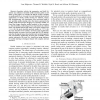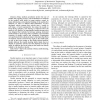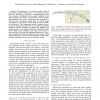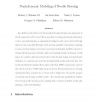42 search results - page 5 / 9 » Soft-tissue injury in robotics |
ICRA
2010
IEEE
13 years 5 months ago
2010
IEEE
Abstract— Insertion velocity, tip asymmetry, and shaft diameter may influence steerable needle insertion paths in soft tissue. In this paper we examine the effects of these vari...
ICRA
2005
IEEE
14 years 28 days ago
2005
IEEE
— Many medical procedures involve the use of needles, but targeting accuracy can be limited due to obstacles in the needle’s path, shifts in target position caused by tissue de...
ICRA
2007
IEEE
14 years 1 months ago
2007
IEEE
—In this paper, we present a passive device for swing assistance of motor-incomplete spinal cord injury patients. This device is aimed at reducing the physical demands on the the...
ICRA
2009
IEEE
14 years 2 months ago
2009
IEEE
— The asymmetry of a bevel-tip needle results in the needle naturally bending when it is inserted into soft tissue. In this study we present a mechanics-based model that calculat...
ISER
2004
Springer
14 years 21 days ago
2004
Springer
As a flexible needle with a bevel tip is pushed through soft tissue, the asymmetry of the tip causes the needle to bend. We propose that, by using nonholonomic kinematics, contro...




